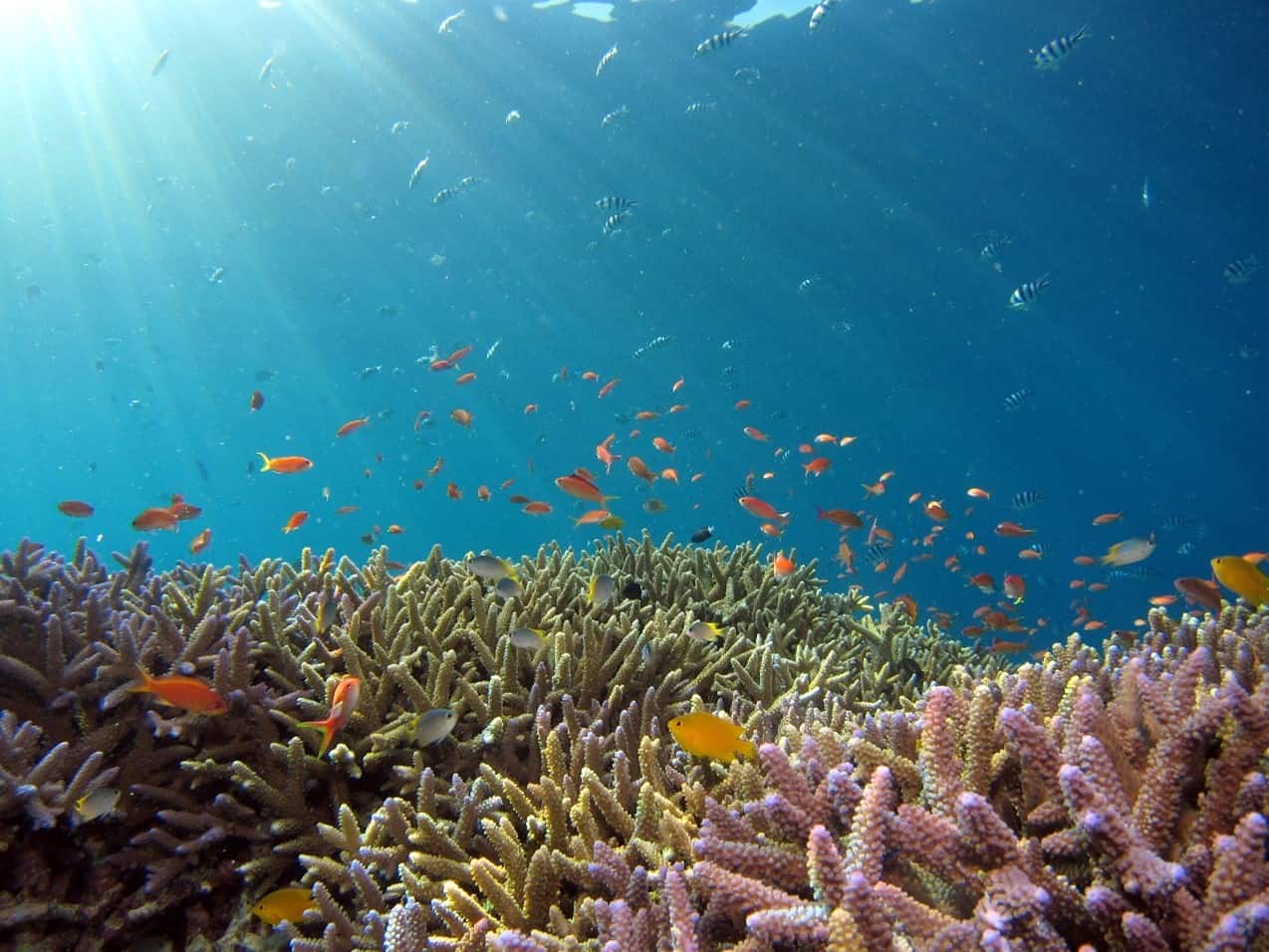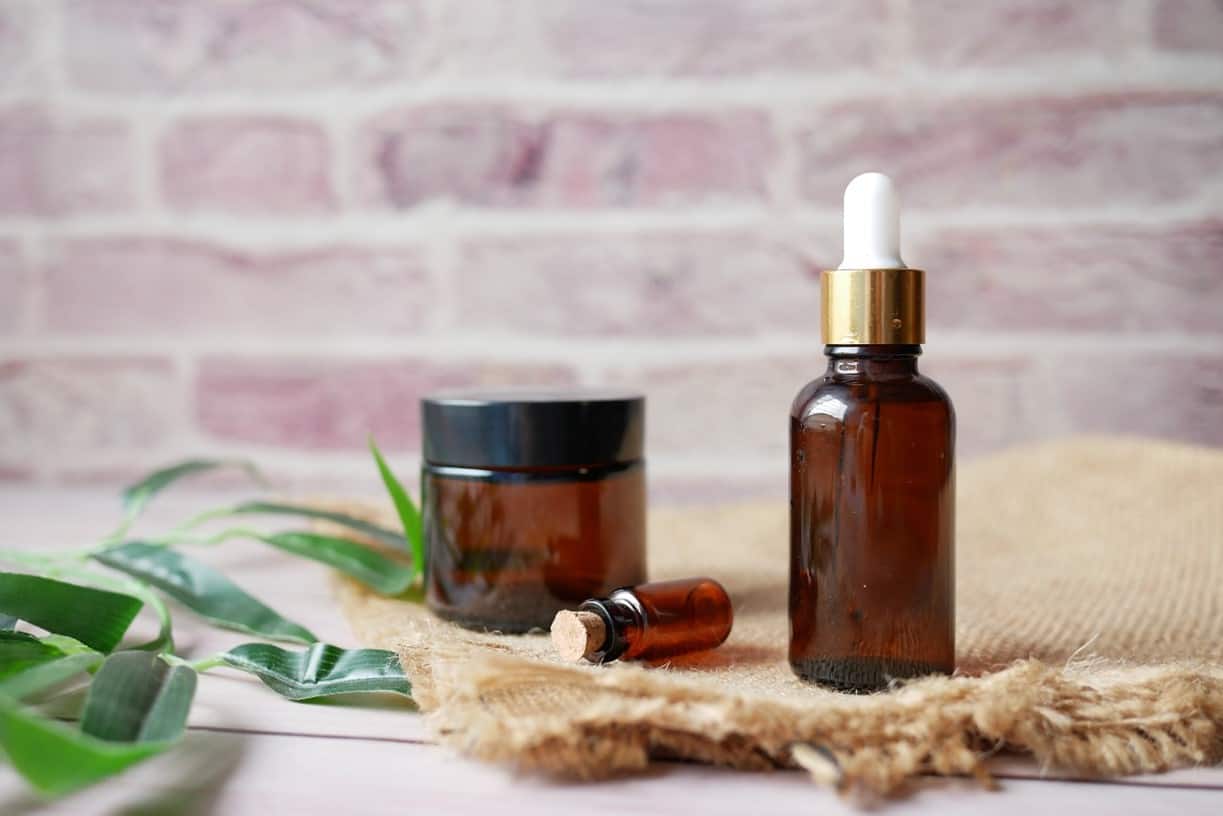Microplastics have become a focal point in environmental and human health concerns in recent years. What are microplastics, and why are they so problematic? How do they enter our water sources and eventually end up in our cosmetics? What cosmetics are free from microplastics? Let's take a closer look at the issue of microplastics.

What Are Microplastics and What Are They Made Of?
Microplastics are small plastic particles measuring less than 5 mm. They can be produced as a byproduct of industrial processes, but also from the breakdown of larger plastics in the environment. Microplastics are often found in cosmetic and hygiene products, such as exfoliating scrubs, toothpaste, or shower gels, where they act as abrasive cleaning agents.
In cosmetics, microplastics primarily come from the use of synthetic polymers (artificial plastics) in products as abrasive particles, thickeners, film-forming agents, or stabilizers. These microplastics are commonly used in exfoliating products, toothpaste, shower gels, shampoos, conditioners, deodorants, makeup, and other cosmetic products.
Some of the most commonly used microplastics in cosmetics include:
-
Polyethylene (PE): This plastic is often used as abrasive particles in exfoliating products and toothpaste.
-
Polypropylene (PP): PP is commonly used as a thickener and stabilizer in products such as shower gels and shampoos.
-
Polyethylene terephthalate (PET): PET is frequently used in products such as shampoos, conditioners, deodorants, and makeup.
-
Polymethyl methacrylate (PMMA): PMMA is often used in products like makeup, where it serves as a film-forming agent and improves the texture and durability of the product.
-
Nylon: Nylon is commonly used as abrasive particles or thickeners in products such as exfoliating scrubs, toothpaste, shower gels, and shampoos.
These substances are used in cosmetics mainly for their low cost, availability, long shelf life, and effectiveness. However, an increasing number of scientific studies and reports highlight the potential environmental and health risks associated with the use of microplastics in cosmetics, leading to increased pressure on the industry to seek more sustainable and environmentally friendly alternatives.
Why Are Microplastics Dangerous?
Microplastics can have negative impacts on both the environment and human health. When they enter water sources, they can become a source of pollution and may be ingested by aquatic organisms, such as fish or shellfish. This can lead to them entering the food chain and eventually our bodies. Studies have shown that microplastics can have toxic effects on certain organisms and can accumulate in our bodies, leading to long-term health issues.
How Do Microplastics Enter the Environment?
Microplastics enter the environment through various pathways. One of the most common sources is wastewater from households, which contains microplastics from cosmetic products and other personal care items. These particles then enter waterways, from where they can reach oceans and the food chain.
Increasing research indicates that microplastics can have harmful effects on biological systems. However, wastewater treatment is not designed to completely capture plastic particles, which is why an increasing number of people in developed countries are purchasing special water filters. Additionally, many households worldwide are not connected to wastewater treatment plants.

What Impact Do Microplastics Have on the Environment and Human Health?
Microplastics have a negative impact on the environment and human health because they accumulate in the food chain and can be toxic to organisms that consume them. Studies also suggest that microplastics may have negative effects on human health as they can penetrate human tissues and organs, causing inflammation and other health issues.
Alternative to Synthetic Polymers that Create Microplastics
One alternative to using microplastics in cosmetics is the use of polyhydroxyalkanoates (PHA), particularly poly-3-hydroxybutyrate (P3HB). PHAs are biodegradable polyesters that serve as energy reserves for various microorganisms in nature. P3HB is one of the most common types of PHA and is non-toxic, biocompatible, and fully biodegradable. P3HB naturally occurs in a variety of microorganisms, such as bacteria and yeasts, which produce it as an energy source and store it as a reserve material.
Advantages of P3HB for Cosmetics
Poly-3-hydroxybutyrate (P3HB) is a biodegradable polyester that naturally occurs in microorganisms as an energy source. In recent years, this biopolymer has been explored as an alternative to traditional plastics in cosmetics, especially considering the growing concerns about the environmental impacts of microplastics.
The advantages of PHAs, such as P3HB, include their ability to replace microplastics in cosmetic products without causing harm to the environment and human health. PHAs can degrade in nature with the help of microorganisms, meaning they will not accumulate in the food chain and will not cause harm to wildlife or human health.
Some cosmetic companies have already begun replacing synthetic polymers in their products with PHAs, representing an important step towards a more sustainable and environmentally friendly solution to the issue of microplastics in cosmetics. These manufacturers include companies like nanoSPACE Cosmetics, Naturetics, and Nafigate.
P3HB has several advantages for cosmetics, including:
-
Biodegradability: P3HB is entirely biodegradable, meaning it breaks down into simple compounds like water, carbon dioxide, and biomass when exposed to microorganisms. This makes it a more environmentally friendly alternative to synthetic plastics, which can persist in the environment for long periods and cause pollution.
-
Biocompatibility: P3HB is biocompatible, meaning it is compatible with the human body and has a low likelihood of causing allergic reactions or irritation. This is important for cosmetic products applied directly to the skin.
-
Renewable Source: P3HB is derived from renewable sources such as plant material or waste, reducing its carbon footprint and dependency on fossil fuels.
-
Versatility: P3HB can be used in the form of particles, fibers, films, or gels, making it suitable for a wide range of cosmetic products, including scrubs, toothpaste, shampoos, conditioners, creams, and makeup.
-
Water Resistance: P3HB has water-resistant properties, which is useful for cosmetic products that need to remain on the skin or hair even in the presence of water, such as makeup or styling products.
Although P3HB presents a promising alternative to traditional plastics in cosmetics, research is still ongoing to improve its properties and manufacturing processes to make it competitive with synthetic plastics in terms of price and availability.

What Can Individuals Do to Reduce the Impact of Microplastics on the Environment?
Each of us can contribute to reducing the impact of microplastics on the environment by becoming an informed consumer and seeking out products that do not contain microplastics. Some tips to achieve this include:
-
Reading Product Ingredients: Check the ingredients of cosmetic products and avoid those containing ingredients such as polyethylene (PE), polypropylene (PP), polyethylene terephthalate (PET), and polymethyl methacrylate (PMMA) that may be a source of microplastics.
-
Seeking Certifications and Labels: Some certification agencies and labels already indicate products without microplastics. Look for such labels when purchasing cosmetic products. Alternatively, look for companies directly using HYDAL technology, among such brands are nanoSPACE Cosmetics, Naturetics, and Nafigate.
-
Supporting Companies Committed to Sustainability: When shopping, support companies committed to reducing their environmental impact and replacing microplastics in cosmetic products. This way, you can demonstrate that there is strong demand for more sustainable products and encourage other companies to follow their example.
-
Waste Segregation: Properly segregate waste and ensure that plastic waste is correctly recycled. This will reduce the amount of plastics that may end up in our environment and potentially degrade into microplastics.
-
Participating in Campaigns and Petition Drives: Get involved in campaigns and sign petitions calling for a ban on microplastics in cosmetic products and urging the industry to adopt more sustainable and environmentally friendly alternatives.
-
Spreading Awareness: Discuss with friends and family about the issue of microplastics in cosmetics and the importance of seeking alternatives. Share information on how to find products without microplastics and how to support companies transitioning to more sustainable solutions.
FAQ – Frequently Asked Questions
What Are Microplastics?
Microplastics are small plastic particles smaller than 5 mm. In cosmetic products, they are often used as abrasive particles in exfoliating preparations, as ingredients in thickeners, and in some makeup products.
How Do Microplastics Enter the Environment?
Microplastics can enter the environment through the use of cosmetic products containing microplastics, during rinsing or washing. These particles can then be flushed into wastewater and can enter rivers, lakes, seas, and oceans, where they can cause damage to ecosystems.
What Are the Impacts of Microplastics on the Environment and Health?
Microplastics enter water and soil and from there through food to animals, which can lead to the deposition of microplastics in the food chain. This way, microplastics also enter our food and drinking water. Studies also show that microplastics can adsorb harmful chemicals and pathogens, which can cause further damage to ecosystems and health.
What Are the Alternatives to Microplastics in Cosmetics?
Some alternatives to microplastics in cosmetics include biodegradable materials such as ground shells, sugar cane, shea nut shells, or P3HB (poly-3-hydroxybutyrate), which is a type of PHA.
What Is Being Done to Regulate Microplastics in Cosmetics?
Some countries, such as the United States, Canada, the United Kingdom, and some EU member states, have already enacted laws banning the use of microplastics in cosmetic products. Many cosmetic companies are also voluntarily reducing or completely eliminating the use of microplastics in their products.
How Can I Determine if a Cosmetic Product Contains Microplastics?
To determine if a cosmetic product contains microplastics, it is important to carefully examine the list of ingredients. Some common names of microplastics include polyethylene (PE), polypropylene (PP), polyethylene terephthalate (PET), polymethyl methacrylate (PMMA), and nylon (PA). If you have doubts about the composition of the product, you can contact the manufacturer or search for information online. When choosing cosmetic products, try to look for those labeled as ecological, without microplastics, or using biodegradable ingredients.
How Can I Contribute to Solving the Problem of Microplastics in Cosmetics?
In addition to making informed choices of cosmetic products without microplastics, you can also support laws and regulations that restrict or ban the use of microplastics in cosmetics. Express your concerns and opinions on this issue and inform your friends and family about the impacts of microplastics on the environment and health. Finally, you can also support organizations and initiatives working to improve awareness of microplastics and advocate for better practices in the cosmetic industry.
What Cosmetics Are Without Microplastics?
Some cosmetic companies, such as nanoSPACE Cosmetics, Naturetics, and Nafigate, have already begun replacing synthetic polymers causing microplastics. Their products are therefore entirely free of microplastics.
Sources
- Claessens, M., De Meester, S., Van Landuyt, L., De Clerck, K. & Janssen, C.R. (2011). Occurrence and distribution of microplastics in marine sediments along the Belgian coast. Marine Pollution Bulletin, 62, 2199-204.
- Claiborne, T.E., Slepian, M.J., Hossainy, S. & Bluestein, D. (2012). Polymeric trileaflet prosthetic heart valves: evolution and path to clinical reality. Expert Review of Medical Devices, 9, 577- 594.
- Cole, M., Lindeque, P., Fileman, E., Halsband, C., Goodhead, R.M., Moger, J. & Galloway, T. (2013). Microplastic ingestion by zooplankton. Environmental Science & Technology, 47, 6646- 6655.
- COM (2014) Towards a circular economy: A zero waste programme for Europe. Communication from the Commission to the European Parliament, the Council, the European Economic and Social Committee and the Committee of the Regions. Brussels, Belgium.
- Cooper, R.A., McAllister, C.M., Borden, L.S., & Bauer, T.W. (1992). Polyethylene debris- induced osteolysis and loosening in uncemented total hip arthroplasty: a cause of late failure. J Arthroplasty 7, 285–290.
- C. Guerranti, T. Martellini, G. Perra, C. Scopetani, A. Cincinelli, Microplastics in cosmetics: Environmental issues and needs for global bans,
Environmental Toxicology and Pharmacology, Volume 68, 2019, Pages 75-79, ISSN 1382-6689, https://doi.org/10.1016/j.etap.2019.03.007.
(https://www.sciencedirect.com/science/article/pii/S1382668918305635) - A.G. Anderson, J. Grose, S. Pahl, R.C. Thompson, K.J. Wyles, Microplastics in personal care products: Exploring perceptions of environmentalists, beauticians and students, Marine Pollution Bulletin, Volume 113, Issues 1–2, 2016, Pages 454-460, ISSN 0025-326X, https://doi.org/10.1016/j.marpolbul.2016.10.048.
- Issac, M.N., Kandasubramanian, B. Effect of microplastics in water and aquatic systems. Environ Sci Pollut Res 28, 19544–19562 (2021). https://doi.org/10.1007/s11356-021-13184-2
- PUNYAUPPA-PATH, Sukrita -; PUNYAUPPA-PATH, Prasongsom. Microplastics: Origin, Environmental impact, Food and Beverage contamination and Management methods. Naresuan University Journal: Science and Technology (NUJST), [S.l.], v. 28, n. 2, p. 72-80, apr. 2020. ISSN 2539-553X. Available at: <https://www.journal.nu.ac.th/NUJST/article/view/Vol-28-No-2-2020-72-80>. Date accessed: 09 may 2023. doi: https://doi.org/10.14456/nujst.2020.17.

